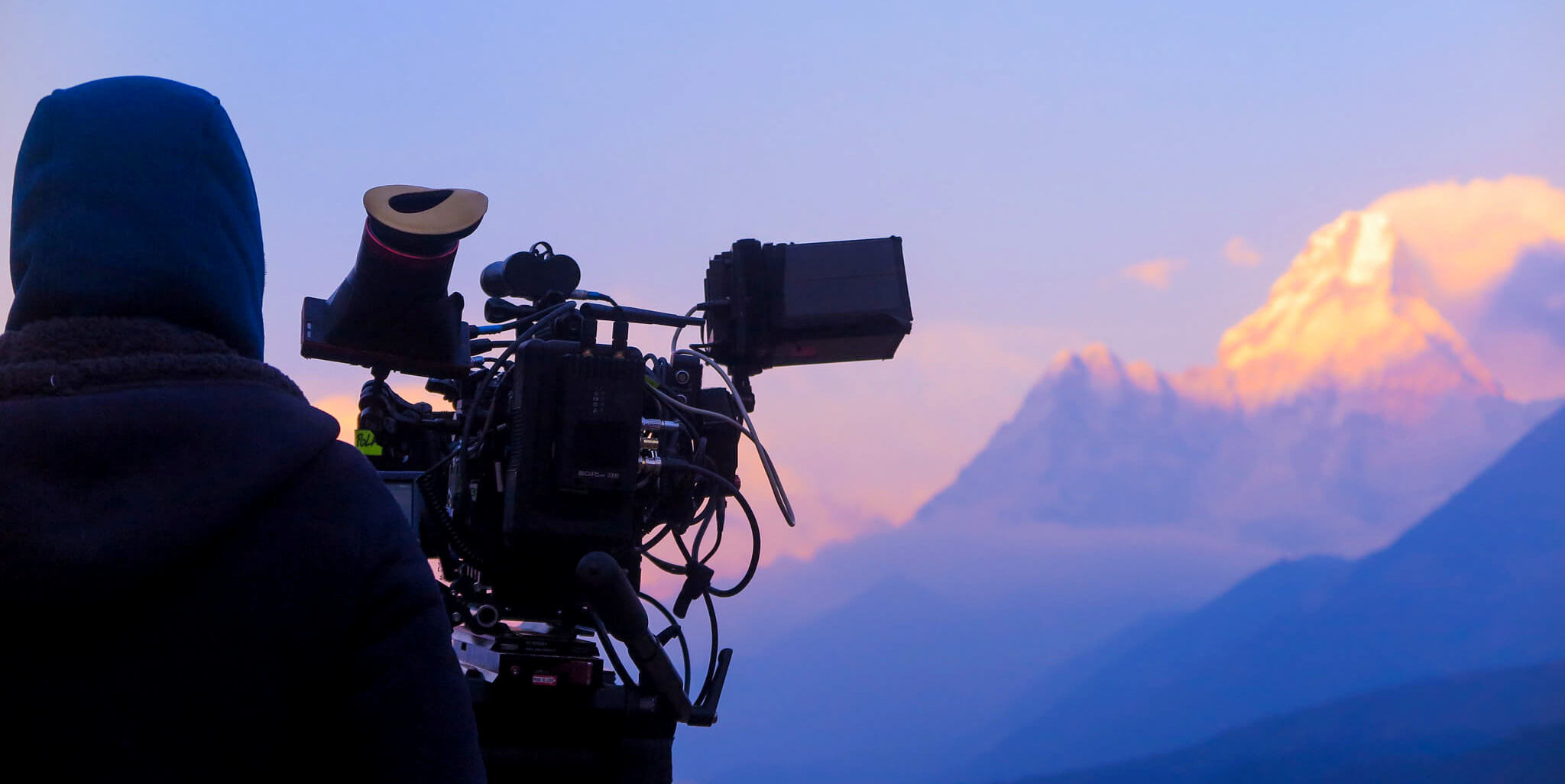Why choose Nepal as a making destination?
Choosing Nepal as a filmmaking destination offers a multitude of benefits, making it an attractive option for filmmakers from around the globe. Here are some compelling reasons to consider:
-
Stunning Nepal Film Locations: Nepal is home to an incredible variety of landscapes, from the towering Himalayas to lush valleys and bustling cityscapes. These Nepal film locations provide filmmakers with diverse and picturesque backdrops that are perfect for a wide range of genres. Whether you're looking to capture the serenity of nature or the vibrancy of urban life, Nepal has it all.
-
Rich Cultural Heritage: The Nepali film industry, or Kollywood Nepal, is deeply rooted in the country's rich cultural heritage. Nepal's unique blend of traditions, festivals, and historical sites offers filmmakers a wealth of material to draw from. This cultural richness adds depth and authenticity to any film project, making it stand out in the global market.
-
Cost-Effective Film Production: Film production in Nepal is known for being cost-effective compared to many other destinations. The lower costs for labor, equipment, and locations make it an ideal choice for both big-budget productions and independent films. Additionally, the government offers various incentives and streamlined processes for obtaining film permits Nepal, further reducing logistical hurdles and expenses.
-
Supportive Infrastructure: Nepal offers robust support for filmmakers through accessible film equipment rental Nepal services and experienced local crews. These resources ensure that filmmakers have everything they need for a smooth and professional production process. The presence of numerous film workshops Nepal and film courses Nepal also ensures a continuous supply of trained professionals in the industry.
-
Thriving Film Festival Scene: Nepal hosts several prominent Nepal film festivals such as the Kathmandu International Mountain Film Festival (KIMFF) and the Nepal International Film Festival (NIFF). These festivals provide excellent platforms for filmmakers to showcase their work, network with industry professionals, and gain international exposure.
-
Diverse Storytelling Opportunities: The diverse environments and cultural narratives in Nepal offer filmmakers unparalleled storytelling opportunities. Whether you're shooting a documentary, an action-packed adventure, or a poignant drama, Nepal's varied settings and rich traditions can enhance the narrative and visual appeal of your film.
Nepal's combination of breathtaking locations, rich cultural heritage, cost-effective production options, supportive infrastructure, and thriving film festival scene makes it an ideal destination for filmmakers. At Relax Getaways, we are dedicated to helping you explore and utilize these incredible opportunities for your next film project.
Top Locations for Film Making in Nepal
Nepal offers an array of stunning locations that have become favorites among filmmakers for their unique beauty and versatility. Here are some of the top locations for filmmaking in Nepal:
Kathmandu Valley: A Cinematic Treasure Trove
The Kathmandu Valley is a filmmaker's dream, blending historical richness with vibrant urban life. Nestled in the heart of Nepal, this valley is a cultural and architectural gem, offering an array of stunning backdrops for a wide variety of film genres. Here are some of the top reasons why the Kathmandu Valley is an ideal location for filmmaking:
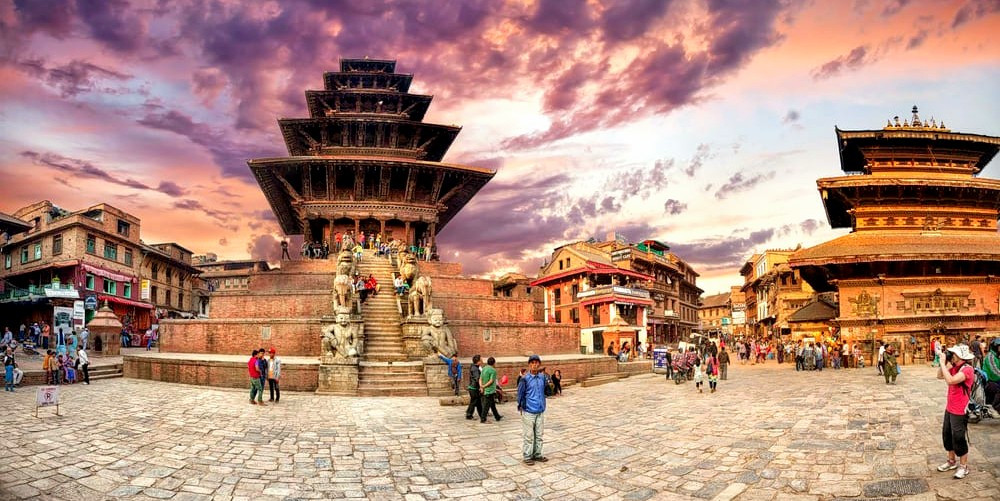
Historic Temples and Monuments
The valley is home to several UNESCO World Heritage Sites, including:
-
Swayambhunath (Monkey Temple): An ancient religious complex atop a hill, providing panoramic views of Kathmandu.
-
Boudhanath Stupa: One of the largest spherical stupas in Nepal, surrounded by vibrant Tibetan culture.
-
Pashupatinath Temple: A sacred Hindu temple complex on the banks of the Bagmati River, known for its detailed architecture and spiritual significance.
-
Durbar Squares: The historic royal squares of Kathmandu, Patan, and Bhaktapur, showcasing intricate palaces, courtyards, and temples.
Vibrant Urban Life
The bustling streets of Kathmandu are a melting pot of cultures and activities. The lively markets, colorful festivals, and traditional Newari architecture provide a dynamic urban setting for contemporary films, documentaries, and cultural explorations.
Cultural Festivals
The valley hosts numerous cultural festivals throughout the year, such as:
-
Dashain and Tihar: Major Hindu festivals celebrated with grand feasts, decorations, and cultural rituals.
-
Indra Jatra: A vibrant festival featuring masked dances, chariot processions, and traditional music.
-
Buddha Jayanti: Celebrations marking the birth of Lord Buddha, with ceremonies at Boudhanath and Swayambhunath.
Authentic Local Lifestyle: The traditional lifestyle of the Newari people, who are the indigenous inhabitants of the valley, offers a unique glimpse into Nepal's rich cultural heritage. Filmmakers can capture the essence of Nepalese daily life, traditional crafts, and age-old customs.
Scenic Landscapes: Beyond the urban hustle, the Kathmandu Valley also offers serene natural landscapes. The lush hills surrounding the valley, such as Shivapuri and Phulchowki, provide beautiful green backdrops ideal for shooting outdoor scenes and nature documentaries.
Film-Friendly Environment: The local authorities and communities in the Kathmandu Valley are supportive of film making, providing necessary permits and assistance. The presence of film equipment rental Nepal services and experienced local crews further facilitates a smooth production process.
Iconic Film Locations in Kathmandu Valley
-
Kathmandu Durbar Square: A historic palace complex featuring ancient temples and courtyards, ideal for period dramas and historical films.
-
Bhaktapur Durbar Square: Known for its medieval architecture and timeless beauty, perfect for films depicting traditional Nepalese culture.
-
Patan Durbar Square: Renowned for its artistic heritage and beautiful courtyards, offering a rich cultural setting for various film genres.
-
Thamel: A vibrant tourist hub with bustling streets, eclectic shops, and lively nightlife, suitable for contemporary urban scenes.
The Kathmandu Valley is a versatile and enchanting film-making destination, offering a blend of historical grandeur and vibrant modernity. Its rich cultural heritage, diverse locations, and supportive environment make it a prime choice for filmmakers looking to capture the essence of Nepal. At Relax Getaways, we are committed to helping you explore and utilize the incredible opportunities the Kathmandu Valley has to offer for your next film project.
Pokhara: A Filmmaker’s Paradise
Pokhara, often referred to as the "Gateway to the Himalayas," is one of Nepal’s most picturesque and versatile film locations. Nestled in the foothills of the Annapurna mountain range, Pokhara offers breathtaking natural beauty, a serene environment, and a wide array of settings that can enhance any film project. Here are some compelling reasons why Pokhara should be at the top of your list for filmmaking in Nepal:
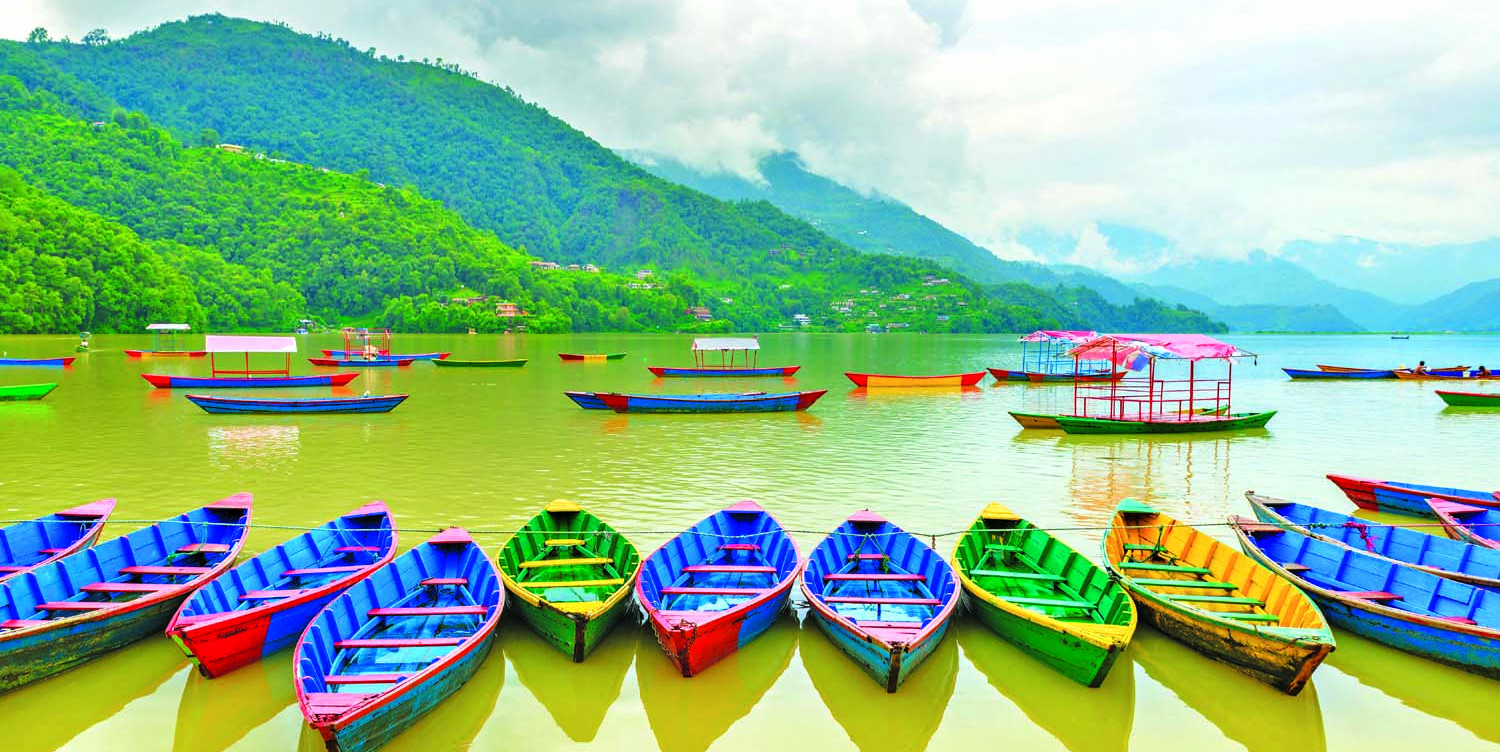
Stunning Natural Scenery
Pokhara is renowned for its stunning landscapes, including:
-
Phewa Lake: A serene and expansive lake that reflects the Annapurna and Machhapuchhre peaks, providing a perfect setting for tranquil and romantic scenes.
-
Begnas and Rupa Lakes: Lesser-known lakes that offer quieter, more secluded locations ideal for intimate and contemplative scenes.
-
Davis Falls: A unique waterfall where the stream flows into an underground tunnel, adding a dramatic touch to any film.
-
Mahendra Cave and Bat Cave: Intriguing limestone caves that can be used for adventure or mystery films.
Himalayan Backdrop
The Annapurna mountain range and the iconic Machhapuchhre (Fishtail) Peak form a stunning backdrop for any film. The snow-capped peaks and clear blue skies create an awe-inspiring setting that enhances the visual appeal of adventure, drama, and documentary films.
Adventure Sports
Pokhara is a hub for adventure sports, offering activities such as:
-
Paragliding: One of the best places in the world for paragliding, with breathtaking aerial views of the valley and mountains.
-
Trekking and Hiking: Numerous trails, including routes to the Annapurna Base Camp and the Poon Hill trek, provide a natural and rugged setting for outdoor and adventure films.
-
Boating and Fishing: The calm waters of Phewa Lake are perfect for serene boating and fishing scenes.
Cultural Richness
Pokhara is also rich in cultural heritage, with sites such as:
-
World Peace Pagoda: A Buddhist stupa offering panoramic views of Pokhara, ideal for spiritual and reflective scenes.
-
Bindhyabasini Temple: A historic Hindu temple that provides a glimpse into the local religious practices and rituals.
-
Old Bazaar: A traditional market area that showcases the local lifestyle and vibrant Newari culture.
Film-Friendly Environment
Pokhara offers a supportive environment for filmmakers with accessible film equipment rental Nepal services, experienced local crews, and a welcoming community. The process of obtaining film permits in Nepal is straightforward, and facilitated by local authorities who are eager to promote the area as a filming destination.
Iconic Film Locations in Pokhara
-
Phewa Lake and Tal Barahi Temple: The temple situated on an island in Phewa Lake creates a unique and picturesque setting.
-
Sarangkot: Known for its sunrise views over the Himalayas, Sarangkot is perfect for capturing breathtaking morning scenes.
-
Gupteshwor Cave: An enigmatic cave near Davis Falls, ideal for adventure and exploration themes.
-
Pokhara Lakeside: A vibrant area filled with restaurants, cafes, and shops, providing a lively urban setting against a scenic backdrop.
Pokhara is a versatile and enchanting location that offers a blend of natural beauty, cultural richness, and adventure. Its diverse settings, from tranquil lakes to majestic mountains, make it a perfect choice for a wide range of film genres. At Relax Getaways, we are dedicated to helping you discover and utilize the stunning locations of Pokhara for your next film project. Embrace the magic of this Himalayan paradise and bring your creative vision to life in one of Nepal's most beautiful settings.
Everest Region: A Cinematic Pinnacle
The Everest Region, home to the world’s highest peak, offers unparalleled scenic beauty and dramatic landscapes that captivate filmmakers from around the globe. Known for its towering mountains, picturesque villages, and rich Sherpa culture, the Everest Region provides an awe-inspiring backdrop for any film project. Here are some key reasons why the Everest Region should be at the top of your list for filmmaking in Nepal:
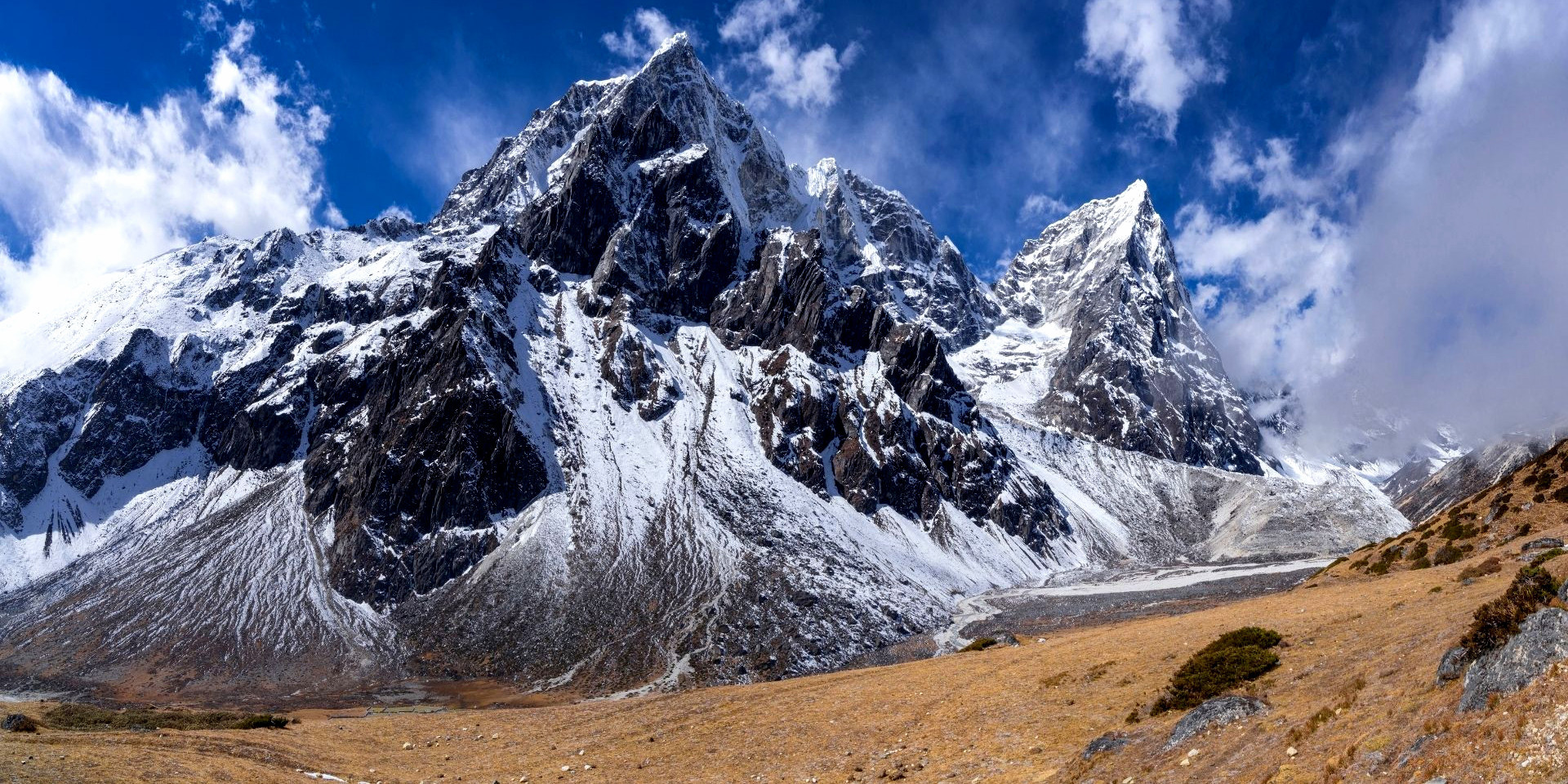
Majestic Mountain Scenery
The Everest Region is renowned for its breathtaking mountain vistas, including:
-
Mount Everest (Sagarmatha): The highest peak in the world, standing at 8,848 meters, is an iconic and awe-inspiring backdrop.
-
Ama Dablam: Often considered one of the most beautiful mountains in the world, its distinct shape adds a dramatic element to any film.
-
Lhotse and Nuptse: These towering peaks create a stunning skyline that is perfect for adventure and nature documentaries.
Unique Cultural Experiences
The Everest Region is home to the Sherpa community, known for their hospitality and unique culture. Key cultural sites include:
- Tengboche Monastery: The largest gompa in the Khumbu region, Tengboche Monastery offers spiritual and cultural depth with its annual Mani Rimdu festival.
- Namche Bazaar: The gateway to Everest, this vibrant market town provides insight into the Sherpa way of life and is ideal for capturing local interactions and lifestyles.
Dramatic Natural Landscapes
The region’s diverse landscapes offer a variety of filming opportunities:
-
Khumbu Glacier: This large glacier near Everest Base Camp provides an otherworldly setting for adventure and exploration themes.
-
Gokyo Lakes: A series of turquoise glacial lakes surrounded by snow-capped peaks, perfect for serene and picturesque scenes.
-
Sagarmatha National Park: A UNESCO World Heritage Site, this park offers rich biodiversity and stunning scenery.
Adventure and Exploration
The Everest Region is synonymous with adventure, offering:
-
Trekking Routes: Iconic trails like the Everest Base Camp Trek and the Gokyo Ri Trek provide dramatic settings for adventure films and documentaries.
-
Climbing Expeditions: Footage of mountaineering expeditions on Everest and nearby peaks adds an element of high-altitude adventure.
Film-Friendly Logistics
The local infrastructure supports filmmakers with facilities such as film equipment rental Nepal services, experienced guides, and porters. The process for obtaining film permits in Nepal is streamlined, with local authorities eager to promote the region as a premier filming destination.
Iconic Film Locations in the Everest Region
-
Everest Base Camp: The starting point for summit attempts, offering a dramatic and iconic setting for high-altitude adventures.
-
Tengboche Monastery: Situated at 3,867 meters, this monastery offers spiritual ambiance and breathtaking views of Everest and Ama Dablam.
-
Namche Bazaar: The bustling heart of the Khumbu region, ideal for capturing the vibrant Sherpa culture and marketplace scenes.
-
Kala Patthar: Known for its panoramic views of Everest, this vantage point is perfect for capturing stunning sunrise and sunset shots.
-
Gokyo Valley: Featuring the pristine Gokyo Lakes and Gokyo Ri, this valley offers both tranquil and rugged landscapes.
The Everest Region is a filmmaker’s paradise, combining the awe-inspiring beauty of the world’s highest mountains with rich cultural experiences and dramatic natural landscapes. Whether you are shooting an adventure film, a documentary, or a cultural exploration, the Everest Region offers unparalleled settings that will enhance your storytelling. At Relax Getaways, we are dedicated to helping you navigate the logistics and make the most of the incredible opportunities the Everest Region has to offer for your next film project. Embrace the majesty of the Himalayas and bring your cinematic vision to life in one of the most breathtaking locations on Earth.
Chitwan National Park: A Wild Filming Haven
Chitwan National Park, located in the subtropical lowlands of Nepal, is a treasure trove for filmmakers seeking lush jungles, diverse wildlife, and vibrant local culture. As Nepal’s first national park and a UNESCO World Heritage Site, Chitwan offers an array of stunning natural backdrops and unique filming opportunities. Here’s why Chitwan National Park should be a prime location for your next film project:
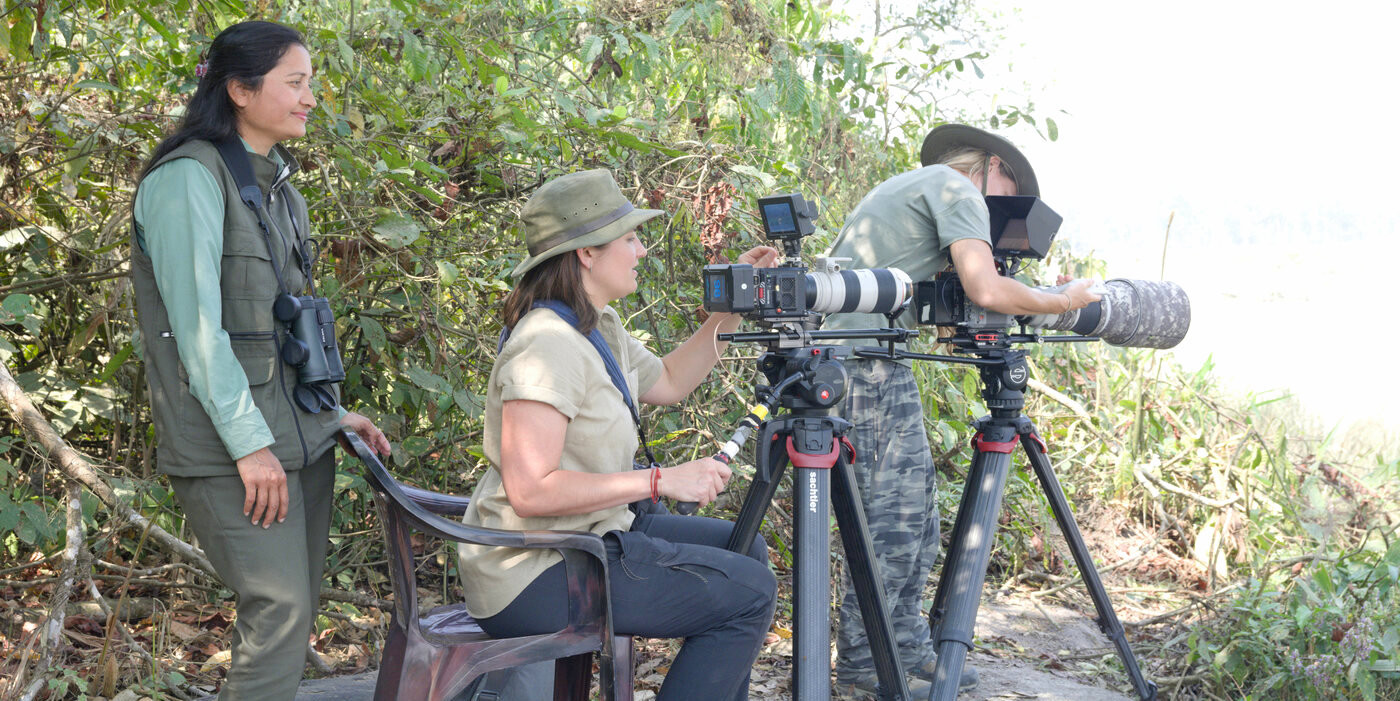
Rich Wildlife
Chitwan is renowned for its incredible biodiversity, making it a perfect setting for wildlife documentaries and nature films. The park is home to:
-
Bengal Tigers: One of the major attractions, providing a thrilling element for wildlife enthusiasts.
-
One-Horned Rhinoceroses: The park has a significant population of these endangered creatures, offering unique filming opportunities.
-
Elephants, Deer, and Gharials: The diverse fauna adds richness to any wildlife-focused narrative.
-
Over 500 Bird Species: From peacocks to kingfishers, the park is a paradise for bird watchers and ornithologists.
Diverse Landscapes
The varied landscapes of Chitwan National Park include:
-
Dense Jungles: Thick sal forests provide a mysterious and lush backdrop, ideal for adventure and exploration themes.
-
Grasslands: Open savannah-like areas are perfect for capturing herds of deer and other grazing animals.
-
Riverine Ecosystems: The Rapti and Narayani rivers offer serene settings for aquatic and riverside scenes.
Cultural Richness
Chitwan is not just about wildlife; it’s also rich in cultural heritage:
-
Tharu Villages: The indigenous Tharu community provides a glimpse into local traditions, dances, and lifestyle, which can add depth to cultural documentaries.
-
Local Festivals: Events such as Maghi, celebrated by the Tharu people, offer vibrant and colorful scenes perfect for cultural explorations.
Adventure Activities
For films that focus on adventure and outdoor activities, Chitwan offers:
-
Elephant Safaris: Capture the unique experience of traversing the jungle on an elephant's back.
-
Canoe Rides: Peaceful canoe trips down the Rapti River are ideal for filming serene and scenic water-based scenes.
-
Jungle Walks and Jeep Safaris: These provide dynamic shots of the park’s diverse flora and fauna from different perspectives.
Film-Friendly Logistics
Chitwan National Park is well-equipped to support filmmakers:
-
Film Equipment Rental Nepal: Local services offer essential gear for wildlife and nature filming.
-
Guides and Naturalists: Experienced local guides can assist with location scouting and ensure a safe and informative filming experience.
-
Film Permits Nepal: The process for obtaining permits is straightforward, with park authorities keen to facilitate film projects that promote conservation and awareness.
Iconic Film Locations in Chitwan National Park
-
Sauraha: The gateway to Chitwan, this town offers easy access to the park and features numerous lodges and cultural experiences.
-
Tiger Tops Tharu Lodge: Located on the edge of the park, providing a blend of luxury and immersion into the local culture and wildlife.
-
Rapti River: Ideal for capturing scenes of riverside wildlife, canoe rides, and stunning sunsets.
-
Kumroj Community Forest: A conservation area adjacent to the park, offering additional wildlife spotting opportunities and a quieter filming environment.
Chitwan National Park is a filmmaker’s haven, offering a rich tapestry of wildlife, diverse landscapes, and cultural depth. Whether you're shooting a wildlife documentary, an adventure film, or a cultural exploration, Chitwan provides the perfect setting. At Relax Getaways, we are committed to helping you make the most of this incredible location for your next film project. Embrace the wild beauty of Chitwan and bring your cinematic vision to life in one of Nepal’s most captivating natural environments.
Lumbini: The Birthplace of Buddha and a Cinematic Gem
Lumbini, the birthplace of Lord Buddha, is a spiritual and historical haven that offers filmmakers a unique blend of tranquility, cultural richness, and historical significance. As a UNESCO World Heritage Site, Lumbini’s serene environment and profound heritage make it an exceptional location for various film genres. Here’s why Lumbini should be a top choice for your next film project:
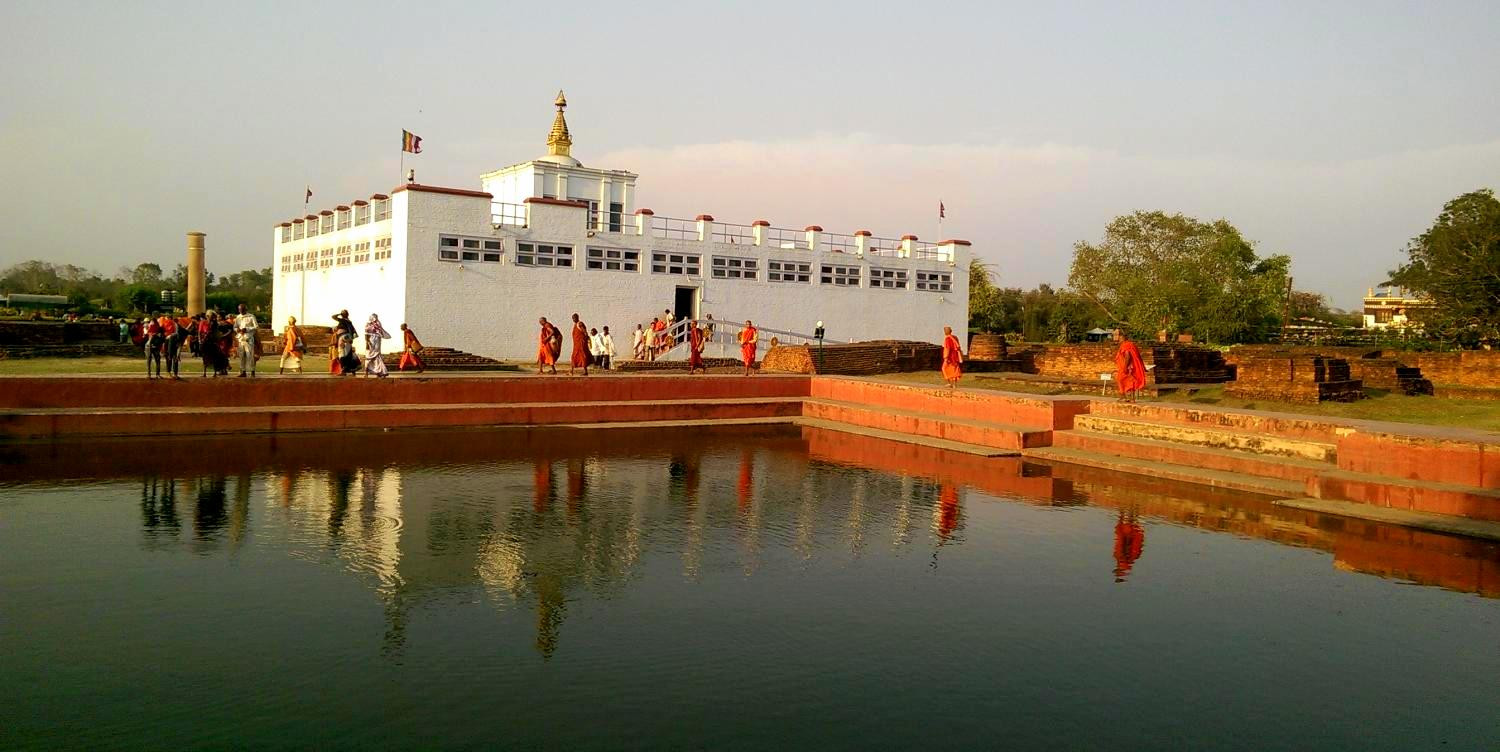
Spiritual and Historical Significance
Lumbini is one of the most important pilgrimage sites in the world, known for:
-
Maya Devi Temple: The exact spot where Queen Maya Devi gave birth to Siddhartha Gautama (Lord Buddha). This sacred site is ideal for films exploring religious themes, historical narratives, and spiritual journeys.
-
Ashoka Pillar: Erected by Emperor Ashoka in 249 BC, this pillar marks Lumbini as the birthplace of Buddha and adds historical depth to any film.
Peaceful Monastic Zones
Lumbini is home to numerous monasteries built by Buddhist communities from around the world:
-
International Monastic Zone: This area features stunning architecture from various countries, including Thailand, Japan, Myanmar, and China. Each monastery’s unique design provides diverse and visually captivating settings.
-
Lumbini Monastic Site: The serene and beautifully landscaped gardens around these monasteries offer tranquil scenes perfect for reflective and meditative film moments.
Cultural Richness
The local culture in Lumbini offers a glimpse into traditional Nepalese life and Buddhist practices:
-
Local Festivals: Celebrations such as Buddha Jayanti, the birthday of Lord Buddha, bring the area to life with vibrant rituals, making it ideal for capturing cultural festivities.
-
Tharu Villages: Nearby villages of the indigenous Tharu people provide rich cultural scenes with their traditional dances, homes, and daily life.
Scenic Landscapes
Beyond its historical and spiritual sites, Lumbini offers serene natural beauty:
-
Sacred Garden: A peaceful area surrounding the Maya Devi Temple, perfect for filming contemplative scenes.
-
Puskarini (Sacred Pond): The pond where Queen Maya Devi is said to have bathed before giving birth. Its serene waters and historical significance add a tranquil and reflective element to any film.
Film-Friendly Logistics
Lumbini is well-equipped to support film production:
-
Film Equipment Rental Nepal: Local services provide necessary gear for historical and cultural filming.
-
Guides and Experts: Knowledgeable local guides can assist with understanding the historical context and significance of various sites, ensuring an authentic portrayal.
-
Film Permits Nepal: Obtaining permits is straightforward, with local authorities supportive of projects that promote Lumbini’s heritage and spirituality.
Iconic Film Locations in Lumbini
-
Maya Devi Temple: The heart of Lumbini, offering a profound spiritual and historical setting.
-
World Peace Pagoda: A striking structure that symbolizes peace and harmony, ideal for films with themes of unity and spirituality.
-
Lumbini Museum: Featuring artifacts and exhibits related to the life of Buddha, providing historical context for documentaries and educational films.
-
Lumbini Crane Sanctuary: A conservation area near the sacred garden, offering a natural setting for wildlife and nature films.
Lumbini is more than just a pilgrimage site; it is a location that offers filmmakers an opportunity to explore themes of spirituality, peace, and cultural heritage. Its blend of serene landscapes, historical landmarks, and cultural richness provides a unique and inspiring backdrop for a wide range of film projects. At Relax Getaways, we are dedicated to helping you discover and utilize the incredible opportunities Lumbini offers for your next cinematic endeavor. Embrace the profound legacy of the birthplace of Buddha and bring your creative vision to life in one of Nepal’s most spiritually enriching settings.
Annapurna Circuit: A Filmmaker’s Alpine Playground
The Annapurna Circuit is one of Nepal’s most iconic trekking routes, renowned for its diverse landscapes, rich cultural experiences, and breathtaking mountain views. Spanning a range of altitudes from lush subtropical forests to arid high-altitude deserts, the Annapurna Circuit offers filmmakers an unparalleled variety of settings. Here’s why the Annapurna Circuit should be a top choice for your next film project:\
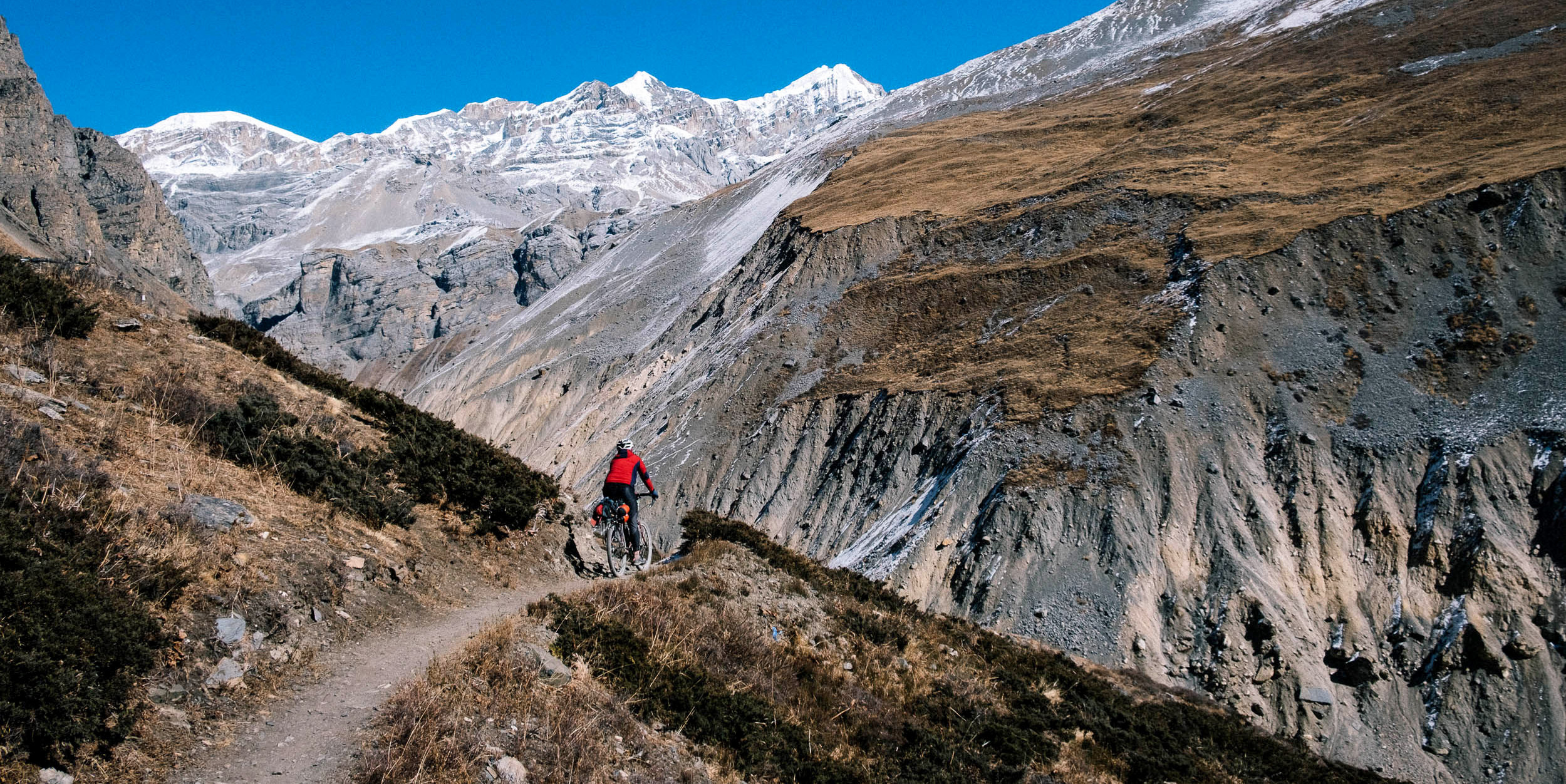
Diverse Landscapes
The Annapurna Circuit provides an extraordinary range of landscapes, including:
-
Subtropical Forests: At lower elevations, the route passes through dense forests teeming with biodiversity, ideal for nature and wildlife films.
-
Terraced Fields and Villages: The mid-elevations feature terraced rice paddies and traditional Nepalese villages, perfect for capturing rural life and agricultural scenes.
-
High-Altitude Deserts: As the trail ascends, it transitions into the arid, rocky landscapes of the Mustang region, offering dramatic and rugged backdrops.
Stunning Mountain Views
The circuit offers some of the most spectacular mountain vistas in the world:
-
Annapurna Massif: The towering peaks of Annapurna I (8,091 meters) and its neighboring mountains provide a majestic and awe-inspiring setting.
-
Dhaulagiri: Views of the Dhaulagiri range add to the dramatic skyline, enhancing the visual appeal of high-altitude shots.
-
Thorong La Pass: At 5,416 meters, this high mountain pass offers panoramic views and a challenging, adventurous backdrop.
Cultural Richness
The route is a tapestry of cultural experiences, showcasing the diverse ethnic groups of Nepal:
-
Gurung and Thakali Villages: Traditional villages along the trail offer insights into the local culture, customs, and daily life.
-
Manang: This ancient town is rich in Tibetan culture and provides a unique, cultural setting for filming.
-
Muktinath Temple: A sacred pilgrimage site for both Hindus and Buddhists, adding spiritual depth to any project.
Adventure and Exploration
The Annapurna Circuit is synonymous with adventure, making it ideal for action-packed and exploration-themed films:
-
Trekking Scenes: Capture the journey of trekkers navigating diverse terrains, crossing suspension bridges, and overcoming physical challenges.
-
Mountain Expeditions: The rugged landscapes and high passes offer dynamic settings for adventure films and documentaries.
Film-Friendly Logistics
The Annapurna Circuit is well-supported by local infrastructure and services:
-
Film Equipment Rental Nepal: Essential gear for high-altitude filming is available in nearby cities like Pokhara and Kathmandu.
-
Guides and Porters: Experienced local guides and porters can assist with location scouting and carrying equipment, ensuring a smooth filming process.
-
Film Permits Nepal: The process for obtaining permits is straightforward, with local authorities and the Annapurna Conservation Area Project (ACAP) facilitating access.
Iconic Film Locations on the Annapurna Circuit
-
Thorong La Pass: The highest point on the circuit, offering stunning panoramic views and an exhilarating setting for high-altitude scenes.
-
Manang Valley: Known for its unique Tibetan culture and dramatic landscapes, perfect for cultural and adventure films.
-
Jomsom: A key location with its picturesque setting and strong winds, ideal for capturing dynamic environmental conditions.
-
Muktinath Temple: A sacred site that provides spiritual and cultural depth, set against the backdrop of the Himalayan peaks.
-
Kagbeni: A medieval village that offers a mix of ancient architecture and beautiful landscapes.
The Annapurna Circuit is a filmmaker’s dream, combining a diverse range of landscapes, rich cultural experiences, and stunning mountain vistas. Whether you're shooting an adventure film, a cultural documentary, or an epic journey, the Annapurna Circuit offers the perfect settings to bring your vision to life. At Relax Getaways, we are dedicated to helping you navigate the logistics and make the most of the incredible opportunities this iconic trekking route has to offer. Embrace the beauty and diversity of the Annapurna Circuit and create a cinematic masterpiece in one of Nepal’s most captivating regions.
Bandipur: A Timeless Filming Location
Bandipur, a picturesque hilltop town in Nepal, is a hidden gem that offers filmmakers a unique blend of traditional Newari culture, stunning mountain views, and charming architecture. Perched on a ridge overlooking the Marsyangdi Valley, Bandipur provides an ideal setting for films that require a combination of historical charm and natural beauty. Here’s why Bandipur should be your next film-making destination:
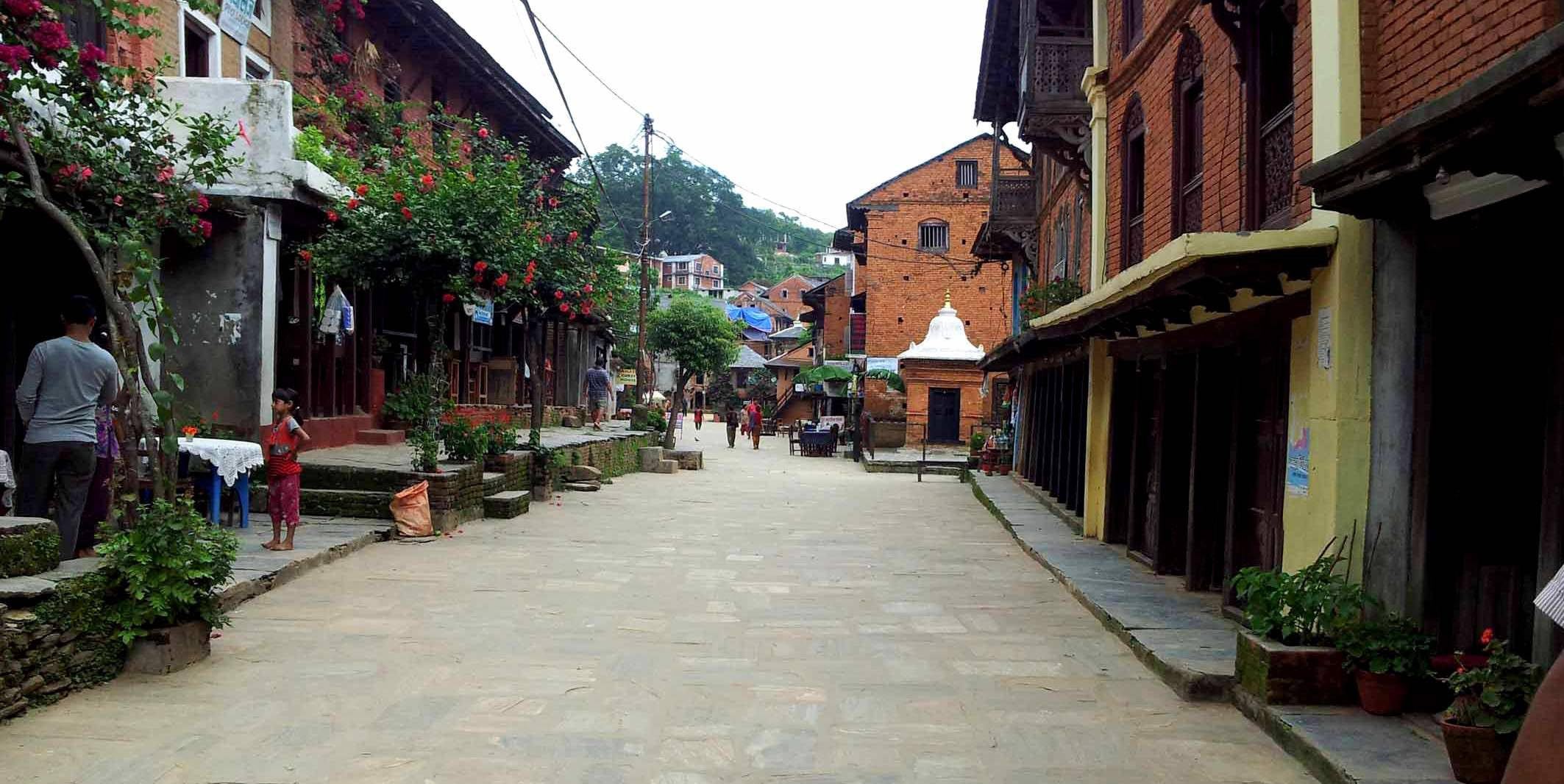
Authentic Newari Culture
Bandipur is known for its well-preserved Newari architecture and vibrant cultural heritage:
-
Traditional Houses: The town’s narrow streets are lined with beautifully restored traditional Newari houses, providing an authentic historical setting.
-
Local Festivals: Bandipur hosts various festivals throughout the year, showcasing traditional music, dance, and rituals that add cultural depth to any film project.
Stunning Mountain Views
The town offers panoramic views of the Himalayan range, including:
-
Annapurna: Clear days reveal stunning vistas of the Annapurna range, providing a majestic backdrop.
-
Dhaulagiri: The towering peaks of the Dhaulagiri range add dramatic visual appeal.
-
Langtang: Views of the Langtang range can also be captured, enhancing the variety of mountain scenery in your film.
Charming Historical Sites
Bandipur is home to several historical and cultural landmarks:
-
Bindhyabasini Temple: This temple, dedicated to the Hindu goddess Bindhyabasini, is located in the town center and offers a serene and culturally rich filming location.
-
Tundikhel: An open field at the edge of the town, Tundikhel offers expansive views of the surrounding valleys and mountains, perfect for wide-angle shots and panoramic scenes.
Lush Natural Surroundings
The lush hills and forests surrounding Bandipur provide a beautiful natural setting:
-
Siddha Cave: One of the largest caves in Nepal, offering a mysterious and adventurous location for filming.
-
Ramkot Village: A short hike from Bandipur, Ramkot is a traditional Magar village with stunning views, ideal for capturing rural life and pastoral landscapes.
Film-Friendly Environment
Bandipur is welcoming to filmmakers and provides necessary logistical support:
-
Film Equipment Rental Nepal: Nearby cities like Pokhara and Kathmandu offer essential film equipment rental services.
-
Local Support: The local community and authorities are supportive of film projects and can assist with obtaining film permits Nepal.
Iconic Film Locations in Bandipur
-
Main Bazaar: The heart of Bandipur, with its traditional buildings and lively atmosphere, is perfect for capturing the essence of Newari culture.
-
Bindhyabasini Temple: Located in the town center, this temple provides a serene and culturally significant backdrop.
-
Tundikhel: Offers expansive views and a spacious setting for outdoor scenes.
-
Siddha Cave: An adventurous location for filming explorations and mysterious scenes.
-
Ramkot Village: Provides a picturesque rural setting with traditional Magar homes and panoramic mountain views.
Bandipur is a versatile and charming location that offers filmmakers a rich tapestry of cultural heritage, historical architecture, and natural beauty. Whether you're shooting a historical drama, a cultural documentary, or a scenic exploration, Bandipur provides the perfect setting to bring your cinematic vision to life. At Relax Getaways, we are dedicated to helping you discover and utilize the unique opportunities that Bandipur offers for your next film project. Embrace the timeless charm of this hilltop town and create a cinematic masterpiece in one of Nepal’s most enchanting locations.
Rara Lake: A Pristine Cinematic Jewel
Rara Lake, the largest lake in Nepal, is a stunningly serene and remote location that offers filmmakers an unspoiled natural paradise. Nestled in the northwestern region of Nepal within Rara National Park, this crystal-clear lake is surrounded by lush forests and snow-capped mountains, providing an idyllic setting for various film genres. Here’s why Rara Lake should be your next film-making destination:
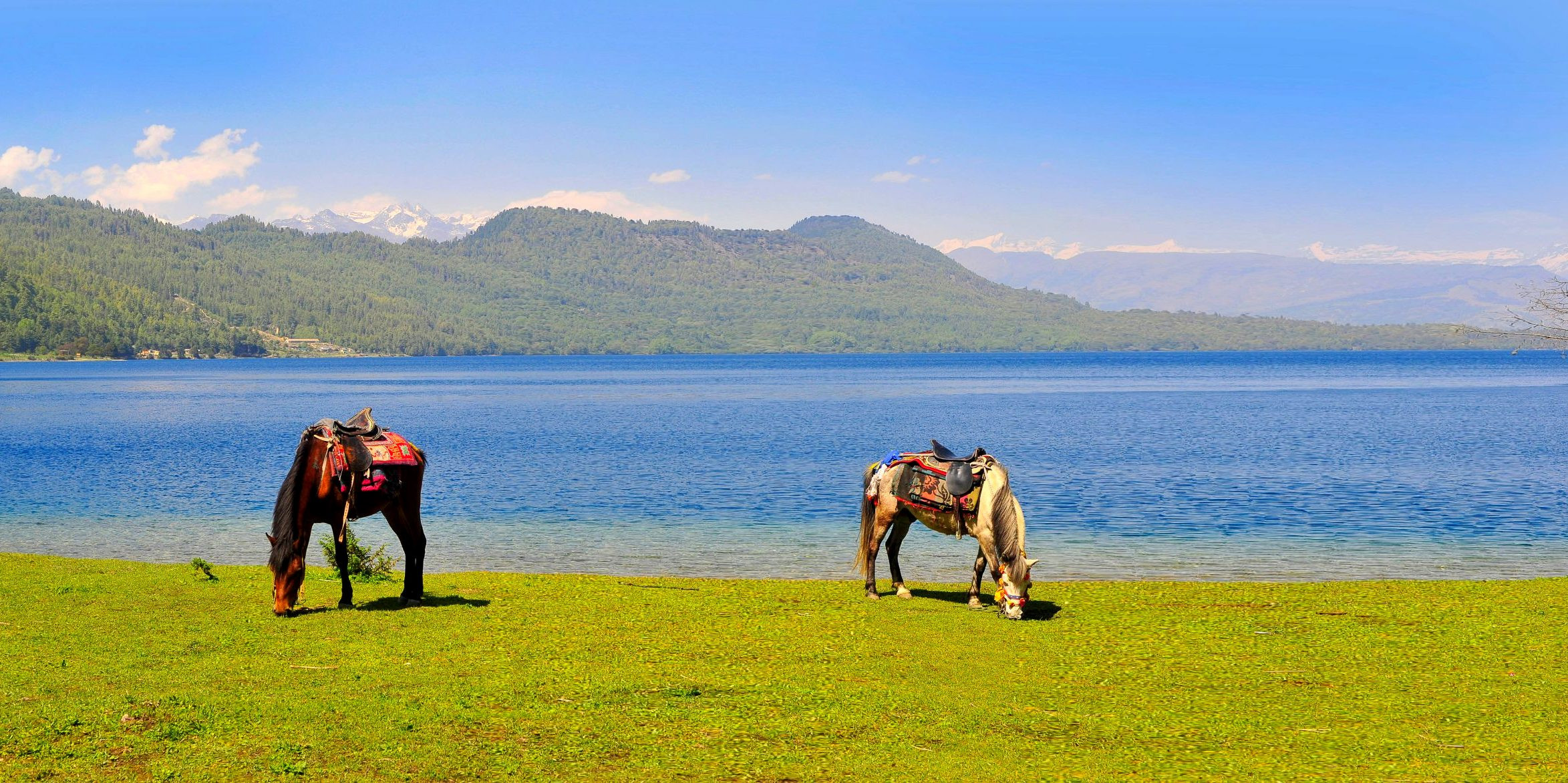
Breathtaking Natural Beauty
Rara Lake is renowned for its striking natural beauty:
-
Crystal-Clear Waters: The lake’s pristine blue waters provide a mesmerizing and tranquil setting, perfect for capturing serene and reflective scenes.
-
Encircling Mountains: The lake is surrounded by the majestic peaks of the Himalayas, offering a dramatic and visually stunning backdrop.
-
Diverse Flora and Fauna: The surrounding forests are home to a variety of wildlife, including rare species of birds and plants, adding depth and richness to nature documentaries.
Remote and Unspoiled Environment
The remote location of Rara Lake ensures a peaceful and unspoiled environment:
-
Tranquility: The lake’s isolation from bustling urban areas provides a quiet and undisturbed setting, ideal for filming contemplative and nature-focused narratives.
-
Pristine Ecosystem: The unpolluted and untouched natural surroundings offer filmmakers the opportunity to capture raw and authentic scenes of natural beauty.
Cultural Richness
The region around Rara Lake is home to various ethnic communities, including the Mugu and Jumla people:
-
Traditional Villages: The nearby villages offer a glimpse into the traditional lifestyles and cultures of the local communities, adding cultural authenticity to any film project.
-
Local Festivals: Filming during local festivals provides vibrant and colorful scenes that showcase the region’s cultural heritage.
Adventure and Exploration
Rara Lake is a hub for adventure and outdoor activities, providing dynamic settings for adventure films:
-
Trekking Routes: The trails leading to Rara Lake pass through diverse landscapes, from lush valleys to rugged mountains, perfect for capturing the essence of an adventurous journey.
-
Boating and Fishing: The calm waters of the lake are ideal for serene boating and fishing scenes.
Film-Friendly Logistics
While remote, Rara Lake is accessible with proper planning and support:
-
Film Equipment Rental Nepal: Essential gear for high-altitude and remote filming is available in larger cities like Kathmandu and Pokhara.
-
Local Guides and Porters: Experienced local guides and porters can assist with logistics, ensuring a smooth and successful filming experience.
-
Film Permits Nepal: The process for obtaining permits is facilitated by local authorities and the Rara National Park administration, who are supportive of film projects that promote the area’s natural beauty.
Iconic Film Locations at Rara Lake
-
Rara Lake Shoreline: The lake’s clear waters and surrounding forests provide a picturesque setting for tranquil and scenic shots.
-
Murma Top: A viewpoint offering panoramic views of Rara Lake and the surrounding mountains, ideal for capturing breathtaking wide-angle scenes.
-
Rara National Park: The diverse flora and fauna within the park offer rich material for wildlife and nature documentaries.
-
Nearby Villages: Traditional villages around the lake, such as Murma Village, provide cultural depth and authenticity to any film.
Rara Lake is a filmmaker’s dream, combining serene natural beauty with cultural richness and a sense of remote tranquility. Whether you're shooting a nature documentary, an adventure film, or a cultural exploration, Rara Lake offers the perfect setting to bring your cinematic vision to life. At Relax Getaways, we are dedicated to helping you navigate the logistics and make the most of the incredible opportunities that Rara Lake has to offer. Embrace the pristine beauty of this hidden gem and create a cinematic masterpiece in one of Nepal’s most enchanting and untouched locations.
Upper Mustang: A Mystical Filming Destination
Upper Mustang, also known as the "Forbidden Kingdom," is a unique and breathtaking region in northern Nepal that offers filmmakers an extraordinary blend of stark desert landscapes, ancient monasteries, and a rich Tibetan-influenced culture. This remote and culturally rich area provides an unparalleled backdrop for films that seek to capture the essence of a mystical and untouched land. Here’s why Upper Mustang should be your next film-making destination:
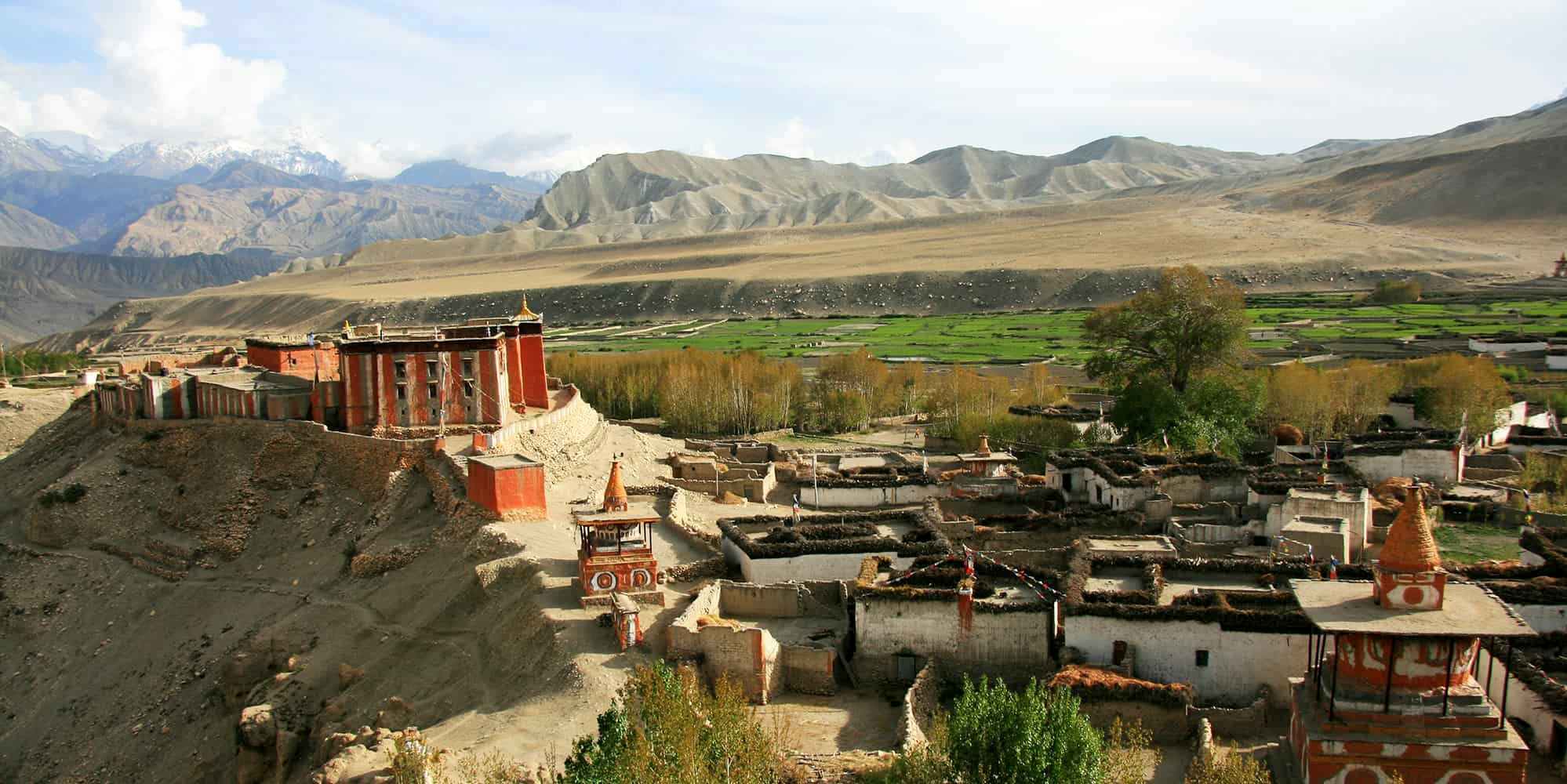
Stunning Desert Landscapes
Upper Mustang is characterized by its dramatic and otherworldly landscapes:
-
Eroded Cliffs and Caves: The region's cliffs and rock formations, often riddled with ancient caves, provide a rugged and visually striking setting.
-
Arid Valleys and Plateaus: The vast, open spaces and high-altitude deserts create a stark and beautiful backdrop for adventure and exploration films.
Rich Cultural Heritage
The region is steeped in Tibetan culture and traditions:
-
Ancient Monasteries: Monasteries such as Lo Gekar and Thubchen Gompa offer an authentic glimpse into Tibetan Buddhist practices and are perfect for spiritual and cultural films.
-
Traditional Villages: Villages like Lo Manthang, the walled capital of the former Kingdom of Lo, showcase traditional Tibetan architecture and lifestyle.
-
Tiji Festival: An annual festival held in Lo Manthang, featuring vibrant masked dances and rituals, providing colorful and dynamic scenes.
Historical Significance
Upper Mustang has a rich history that adds depth to any film project:
-
Ancient Kingdom: Once a part of the ancient Kingdom of Lo, the area has a heritage that dates back centuries, offering historical authenticity for period dramas.
-
Medieval Fortresses and Palaces: The ruins of old fortresses and palaces add a sense of mystery and historical intrigue.
Adventure and Exploration
The rugged terrain of Upper Mustang is ideal for adventure films:
-
Trekking Routes: Iconic treks such as the route to Lo Manthang provide dynamic and challenging settings for adventure and exploration narratives.
-
Mountain Biking: The high-altitude trails and rugged landscapes offer exciting opportunities for filming extreme sports and outdoor activities.
Film-Friendly Logistics
Despite its remote location, Upper Mustang is accessible with the right support:
-
Film Equipment Rental Nepal: Essential film equipment can be sourced from larger cities like Kathmandu, with provisions made for transporting gear to remote locations.
-
Local Support: Experienced guides, porters, and locals familiar with the terrain and culture can assist with logistics and location scouting.
-
Film Permits Nepal: The process for obtaining permits is facilitated by local authorities and the Annapurna Conservation Area Project (ACAP), who support projects that promote the region's heritage and beauty.
Iconic Film Locations in Upper Mustang
-
Lo Manthang: The walled capital offers a blend of ancient architecture, narrow alleyways, and vibrant local culture, making it a perfect location for historical and cultural films.
-
Chhoser Cave: A series of ancient man-made caves that provide a mysterious and dramatic setting.
-
Tsarang Monastery and Palace: The ruins of this ancient site offer a glimpse into the region's historical significance.
-
Kagbeni: The gateway to Upper Mustang, featuring traditional Tibetan-style houses and a picturesque setting along the Kali Gandaki River.
Upper Mustang is a filmmaker’s dream, offering a unique combination of stark desert landscapes, rich cultural heritage, and historical significance. Whether you're shooting an adventure film, a cultural documentary, or a historical drama, Upper Mustang provides the perfect setting to bring your cinematic vision to life. At Relax Getaways, we are dedicated to helping you navigate the logistics and make the most of the incredible opportunities that Upper Mustang has to offer. Embrace the mystical allure of this forbidden kingdom and create a cinematic masterpiece in one of Nepal’s most captivating and culturally rich regions.
Bhaktapur: A Living Museum for Filmmakers
Bhaktapur, one of the three ancient cities in the Kathmandu Valley, is a treasure trove of medieval art and architecture. Known for its well-preserved heritage and vibrant local culture, Bhaktapur offers filmmakers a unique and authentic setting that brings historical narratives and cultural stories to life. Here’s why Bhaktapur should be a prime location for your next film project:
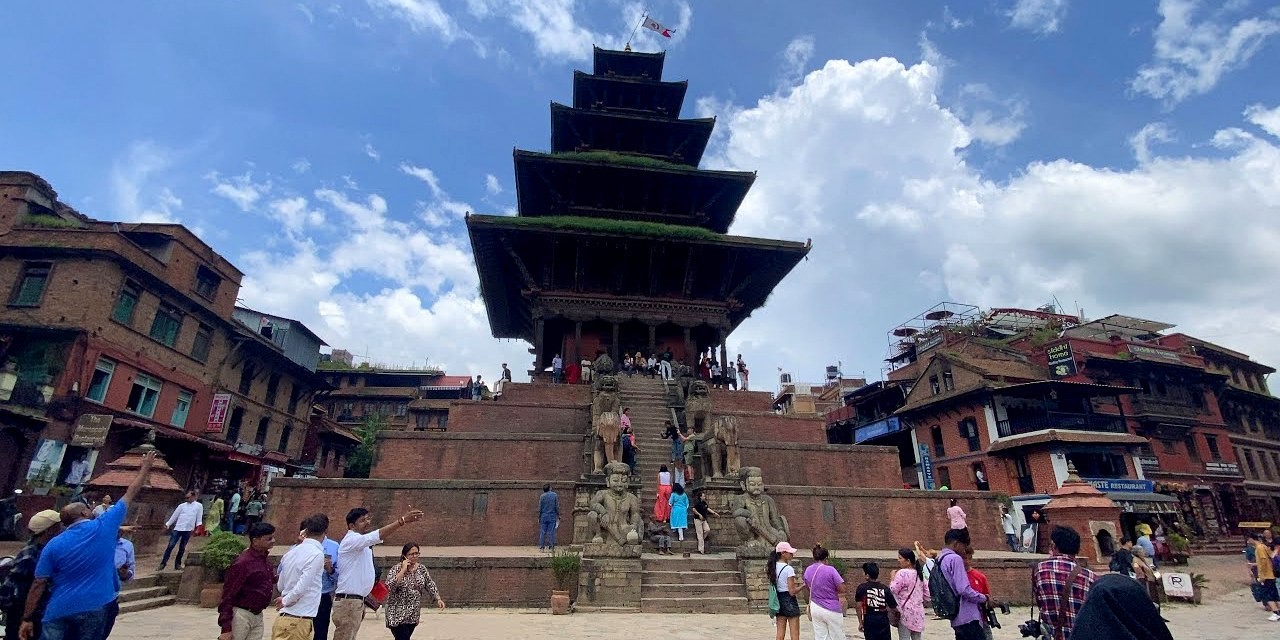
Rich Cultural Heritage
Bhaktapur, often referred to as the “City of Devotees,” is a living museum with its centuries-old temples, palaces, and courtyards:
-
Bhaktapur Durbar Square: This UNESCO World Heritage Site features stunning palaces, courtyards, and pagoda-style temples, perfect for historical dramas and cultural films.
-
Nyatapola Temple: The tallest pagoda-style temple in Nepal, offering an iconic and majestic backdrop.
-
Dattatreya Square: Known for its ancient Dattatreya Temple and the intricately carved Peacock Window, this area is rich in artistic detail and historical significance.
Traditional Newari Architecture
Bhaktapur is renowned for its traditional Newari architecture:
-
Narrow Alleyways and Brick Houses: The winding streets and traditional brick houses provide an authentic setting for period films.
-
Pottery Square: A bustling area where traditional pottery-making is still practiced, ideal for capturing the essence of local craftsmanship.
-
Wood Carving and Metalwork: The town is famous for its exquisite wood and metal carvings, adding intricate details to any film set.
Vibrant Festivals and Cultural Events
Bhaktapur hosts numerous festivals that bring the city to life:
-
Bisket Jatra: The annual New Year festival featuring chariot processions, traditional dances, and cultural rituals, perfect for capturing dynamic and colorful scenes.
-
Gaijatra: The Cow Festival, celebrated with unique parades and performances that highlight local traditions.
-
Dashain and Tihar: Major Hindu festivals celebrated with grand feasts, decorations, and community gatherings.
Scenic Landscapes
Beyond its architectural beauty, Bhaktapur offers scenic natural surroundings:
-
Nagarkot: A nearby hill station offering panoramic views of the Himalayas, ideal for capturing stunning sunrise and sunset shots.
-
Changu Narayan: An ancient temple located on a hilltop, surrounded by lush forests, providing a serene and spiritual setting.
Film-Friendly Logistics
Bhaktapur is well-equipped to support filmmakers:
-
Film Equipment Rental Nepal: Essential gear for shooting is readily available in nearby Kathmandu.
-
Local Support: Knowledgeable guides, local actors, and extras familiar with the culture and history of Bhaktapur can enhance the authenticity of your film.
-
Film Permits Nepal: The process for obtaining permits is straightforward, with local authorities supportive of projects that promote the city's heritage.
Iconic Film Locations in Bhaktapur
-
Bhaktapur Durbar Square: The heart of the city, offering a blend of historical grandeur and vibrant local life.
-
Nyatapola Temple: This towering temple provides an impressive and iconic backdrop.
-
Pottery Square: A bustling area showcasing traditional craftsmanship and local culture.
-
Dattatreya Square: Known for its ancient temples and artistic details, perfect for historical and cultural narratives.
-
Nagarkot: Offers breathtaking views of the Himalayan range, adding a natural scenic element to any film.
Bhaktapur is a filmmaker’s paradise, offering a rich tapestry of cultural heritage, historical architecture, and vibrant local traditions. Whether you're shooting a historical epic, a cultural documentary, or a period drama, Bhaktapur provides the perfect setting to bring your cinematic vision to life. At Relax Getaways, we are dedicated to helping you explore and utilize the unique opportunities that Bhaktapur offers for your next film project. Embrace the timeless beauty and cultural richness of this ancient city and create a cinematic masterpiece in one of Nepal’s most enchanting and historically significant locations.
Tips for Film Making in Nepal
Filming in Nepal offers a unique and enriching experience, but it also requires careful planning and consideration to navigate the diverse landscapes, cultural sensitivities, and logistical challenges. Here are some essential tips for making the most of your film-making venture in Nepal:
Understand the Local Culture
-
Respect Traditions: Nepal has a rich cultural heritage with deeply rooted traditions and customs. Respect local practices and seek permission before filming cultural or religious ceremonies.
-
Engage with Locals: Building good relationships with local communities can provide valuable insights and support for your project.
Scout Locations Early
-
Varied Landscapes: From the high Himalayas and lush jungles to historical cities and remote villages, Nepal offers diverse locations. Conduct thorough location scouting to choose the best settings for your scenes.
-
Seasonal Considerations: Consider the best time of year for filming. The post-monsoon (October-November) and pre-monsoon (April-May) periods generally offer clear weather and good visibility.
Obtain Necessary Permits
-
Film Permits Nepal: Ensure you have the required permits for filming in various locations, including protected areas and cultural sites. Contact local authorities or the Nepal Film Development Board for assistance.
-
Drone Usage: If you plan to use drones, secure the necessary permissions from the Civil Aviation Authority of Nepal.
Plan for Logistics
-
Transport and Accessibility: Nepal’s terrain can be challenging. Plan your transport logistics carefully, especially for remote locations. Hiring local guides and porters can be invaluable.
-
Accommodation and Food: In remote areas, accommodation options may be limited. Be prepared for basic living conditions and plan for food supplies accordingly.
Health and Safety
-
Altitude Sickness: If filming in high-altitude areas like the Everest Region or Annapurna Circuit, acclimatize properly to avoid altitude sickness. Carry essential medications and a first-aid kit.
-
Vaccinations and Health Precautions: Ensure you have the necessary vaccinations and follow health guidelines to prevent illnesses.
Technical Considerations
-
Film Equipment Rental Nepal: Major cities like Kathmandu and Pokhara offer film equipment rental services. Ensure you have access to necessary gear and consider renting locally to reduce transportation costs.
-
Power Supply: In remote locations, power supply may be inconsistent. Carry backup batteries and portable chargers for your equipment.
Environmental Responsibility
-
Leave No Trace: Nepal’s natural beauty is a significant attraction. Practice responsible filming by minimizing your environmental impact and leaving locations as you found them.
-
Support Conservation Efforts: Collaborate with local conservation organizations, especially if filming in national parks or protected areas.
Legal and Financial Considerations
-
Contracts and Agreements: Ensure all agreements with local actors, crew, and service providers are documented to avoid misunderstandings.
-
Budget for Contingencies: Factor in extra costs for unforeseen circumstances, such as weather delays or additional permits.
Local Expertise
-
Hire Local Crew: Local film professionals can offer invaluable knowledge about the best practices and locations. They can also assist with language barriers and cultural nuances.
-
Guides and Translators: Hiring local guides and translators can greatly facilitate communication and logistics, particularly in rural and remote areas.
Post-Production Considerations
-
Editing and Production: Plan your editing and post-production stages, considering the availability of facilities and expertise in Nepal or whether you will complete this work in your home country.
-
Cultural Sensitivity in Content: Ensure your final product respects the cultural and social values of Nepal to avoid any potential backlash or offense.
Filming in Nepal can be a rewarding experience that brings unique and breathtaking visuals to your project. By respecting local culture, planning thoroughly, and leveraging local expertise, you can navigate the challenges and make the most of the incredible opportunities Nepal offers. At Relax Getaways, we are dedicated to supporting filmmakers in exploring and utilizing the diverse and beautiful locations across Nepal. Follow these tips to ensure a successful and enriching film-making journey in this captivating country.
Filmmaking in Nepal offers an unparalleled blend of stunning natural beauty, rich cultural heritage, and diverse locations. From the majestic Himalayas and serene lakes of Pokhara to the ancient temples of Kathmandu Valley and the unspoiled wilderness of Chitwan National Park, Nepal provides exceptional settings for any cinematic vision. With accessible film equipment rental Nepal services and streamlined film permits Nepal processes, the country is ideal for both local and international productions. At Relax Getaways, we support filmmakers in navigating Nepal’s diverse landscapes and cultural nuances, ensuring a seamless and enriching experience. Embrace the opportunities that filmmaking in Nepal presents and create a cinematic masterpiece in one of the world’s most captivating destinations.
FAQs for Film Making in Nepal
Q: What are the best locations for filming in Nepal?
A: Nepal offers a range of stunning locations such as the historic temples and vibrant urban life of Kathmandu Valley, the serene lakes and majestic mountain views of Pokhara, and the high-altitude adventure scenes in the Everest Region. Other notable locations include the wildlife-rich Chitwan National Park, the spiritual and historical Lumbini, the diverse landscapes of the Annapurna Circuit, the traditional Newari architecture of Bandipur, the pristine beauty of Rara Lake, the stark desert landscapes of Upper Mustang, and the well-preserved medieval architecture of Bhaktapur.
Q: How do I obtain film permits in Nepal?
A: To obtain film permits in Nepal, you need to contact the Nepal Film Development Board (NFDB) or local authorities for specific location permits. Provide detailed information about your project, including the purpose, locations, and duration of filming. Pay the required fees and follow any additional guidelines provided by the authorities.
Q: What is the best time of year to film in Nepal?
A: The best times to film in Nepal are during the post-monsoon (October-November) and pre-monsoon (April-May) periods. These times offer clear skies, good visibility, and pleasant weather, making them ideal for capturing the country's natural beauty.
Q: Can I rent film equipment in Nepal?
A: Yes, film equipment is available for rent in major cities like Kathmandu and Pokhara. These services offer a wide range of equipment, from cameras and lighting to drones and sound gear, ensuring you have everything you need for your project.
Q: Are there local crew and guides available for hire?
A: Nepal has experienced local crews, guides, and porters who can assist with filming logistics, location scouting, and cultural insights. Hiring local professionals can enhance the authenticity and efficiency of your film-making process.
Q: What are the health and safety considerations for filming in Nepal?
A: When filming in high-altitude areas like the Everest Region, proper acclimatization is crucial to avoid altitude sickness. Ensure you have necessary vaccinations and follow health guidelines. It's also important to carry a comprehensive first-aid kit and essential medications for your crew's safety.
Q: How can I ensure my film respects local culture and traditions?
A: Engage with local communities and seek permission before filming cultural or religious ceremonies. Being respectful of local customs, traditions, and religious practices is essential to maintaining good relationships and ensuring cultural sensitivity in your film.
Q: What are the logistical challenges of filming in remote locations?
A: Filming in remote areas like Upper Mustang and Rara Lake may present challenges such as limited access, challenging terrain, and basic living conditions. Planning for transport logistics and ensuring you have adequate supplies for accommodation and power are essential for a successful shoot.
Q: What are the environmental considerations for filming in Nepal?
A: To minimize your environmental impact, practice responsible filming by following the principles of "leave no trace." Collaborating with local conservation organizations when filming in national parks or protected areas can also support conservation efforts and ensure sustainable film-making practices.
Q: How do I budget for a film project in Nepal?
A: When budgeting for a film project in Nepal, include costs for obtaining permits and any location fees. Account for hiring local crew, guides, and renting equipment. Additionally, factor in extra costs for unforeseen circumstances, such as weather delays or additional permits, to ensure a smooth production process.
For the Nepal tour, please click here.
If you are looking for different kinds of Nepal Tours or Trekking Packages, feel free to contact us.
